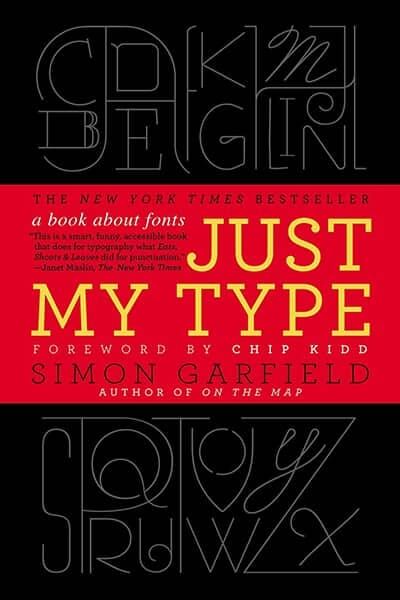An Essay on Typography Book Summary
In 'An Essay on Typography,' Eric Gill explores the art and craft of type design, revealing how typography shapes our perception of written language. Through a blend of philosophical musings and practical insights, Gill argues that type is not just a tool for communication, but an integral aspect of visual culture. He challenges conventional approaches and invites readers to appreciate the aesthetic and ethical implications of typographic choices. This thought-provoking essay raises questions about the role of the designer in society and the impact of typography on our daily lives. Dive into Gill's world to uncover the beauty and power of letters that often goes unnoticed.
By Eric Gill
Published: 1988
""The great thing about typography is that it’s a medium that constantly reflects the changing nature of thought and culture, marrying form and function in a dance that can both reveal and obscure meaning.""
Book Review of An Essay on Typography
An Essay on Typography was first published in 1931, instantly recognized as a classic, and has long been unavailable. It represents Gill at his best: opinionated, fustian, and consistently humane. It is his only major work on typography and remains indispensable for anyone interested in the art of letter forms and the presentation of graphic information. This manifesto, however, is not only about letters "š€š" their form, fit, and function "š€š" but also about man's role in an industrial society. As Gill wrote later, it was his chief object "to describe two worlds "š€š" that of industrialism and that of the human workman "š€š" and to define their limits." His thinking about type is still provocative. Here are the seeds of modern advertising: unjustified lines, tight word and letter spacing, ample leading. Here is vintage Gill, as polemical as he is practical, as much concerned about the soul of man as the work of man; as much obsessed by the ends as by the means.
Book Overview of An Essay on Typography
About the Book Author
Eric Gill
Eric Gill (1882-1940) was an influential British sculptor, typeface designer, and printmaker, renowned for his contributions to the Arts and Crafts movement. His notable works include the famous Gill Sans typeface, as well as his sculptures such as the 'Altar for the Cathedral of St. John the Divine' in New York. Gill's writing style is characterized by its clarity and precision, often reflecting his deep philosophical inquiries into art and society. In addition to his artistic creations, Gill authored several essays and books on typography, design, and religion, exploring the intersection of aesthetics and belief.
Book Details
Key information about the book.
- Authors
- Eric Gill
- Published
- January 1988
- Publisher
- David R. Godine Publisher
- ISBN
- 0879239506
- Language
- English
- Pages
- 166
- Genres
- Design ThinkingGraphic DesignDesign
Purchase Options
Support local bookstores: BookShop gives a portion of each sale to independent bookshops!
Similar books you might like →
Stop Stealing Sheep & Find Out how Type Works Book Summary
In 'Stop Stealing Sheep & Find Out How Type Works', Erik Spiekermann and E.M. Ginger unravel the mysteries of typography in a way that's both accessible and captivating. This book challenges conventional notions of design by revealing how the right type can elevate communication and influence perception. Delve into the art and science of lettering, as readers learn to recognize what makes typography effective and appealing. With engaging examples and practical insights, this guide is a treasure trove for designers and enthusiasts alike. Discover why understanding type is not just about aesthetics, but a crucial aspect of visual storytelling.
Better Web Typography for a Better Web Book Summary
In 'Better Web Typography for a Better Web,' Matej Latin unveils the transformative power of typography in web design. He delves into the principles of effective type, demonstrating how thoughtful choices can enhance user experience and engagement. The book is packed with practical tips and real-world examples to help designers craft visually stunning and readable websites. Latin's insights challenge conventional norms, urging readers to rethink their approach to typography. This essential guide equips both aspiring and seasoned designers with the tools to elevate their craft and create a more beautiful web.
The Visual History of Type Book Summary
'The Visual History of Type' by Paul McNeil is a stunning exploration of typography's evolution throughout history. This richly illustrated tome uncovers the stories behind iconic typefaces and the designers who created them. Readers will marvel at the interplay between type and culture, revealing how lettering has shaped our visual landscape. McNeil's passion for the subject shines, offering insights that provoke thought and inspire creativity. Dive into this captivating journey that promises to change the way you perceive the world of type!
A Book Apart: On web typography - Jason Santa Maria Book Summary
In 'A Book Apart: On Web Typography,' Jason Santa Maria unveils the critical art of type on the web, exploring how typefaces can shape user experience. Delve into the interplay between design and readability, and discover how thoughtful typography can enhance digital communication. With practical insights and inspiring examples, Santa Maria challenges conventional wisdom and encourages designers to push the boundaries of creativity. This book is not just a manual; it's an invitation to rethink how we present words online. Whether you're a seasoned designer or a curious newcomer, this exploration of typography will transform your understanding of web aesthetics.
Typography Essentials Revised and Updated Book Summary
In 'Typography Essentials Revised and Updated', Ina Saltz unveils the fundamental principles of typography that every designer should master. With rich illustrations and practical examples, she guides readers through the art and craft of type, making complex concepts accessible and engaging. Discover how type choices influence communication and the emotional impact of design. This revised edition includes the latest trends and technologies shaping the typographic landscape today. Whether you're a novice or a seasoned pro, this book will inspire you to see type in a whole new light!
The Evolution of Type Book Summary
'The Evolution of Type' by Tony Seddon takes readers on a captivating journey through the history and development of typography. Delve into the transformation of typefaces from ancient inscriptions to modern digital fonts, revealing the intricate relationship between technology and design. Seddon artfully illustrates how cultural shifts and artistic movements have influenced type development, creating a visual narrative that enchants both designers and history enthusiasts alike. With rich illustrations and engaging anecdotes, this book invites you to appreciate letters not just as tools for communication, but as dynamic art forms. Discover how type influences our daily lives in ways you’ve never considered, and why every letter tells a story.
Just My Type Book Summary
In 'Just My Type', Simon Garfield explores the fascinating world of typography and its profound impact on our daily lives. From the iconic fonts that define culture to the hidden messages conveyed through typeface choices, Garfield uncovers the artistry and science behind each letter. Readers are taken on a journey through history, tracing the evolution of fonts and their creators, igniting a newfound appreciation for the words we often overlook. With humor and insight, the book invites us to rethink the way we view text and design. Prepare to look at the printed word in an entirely new light!
Type on Screen Book Summary
In 'Type on Screen,' Ellen Lupton explores the vibrant world of typography in the digital age, revealing how type shapes our visual culture and communication. With a keen eye for design, she uncovers the dynamics between text, screen, and viewer, making the complex art of typography accessible to all. Through engaging examples and insightful commentary, Lupton challenges readers to rethink the role of type in their everyday lives. This book is not just a guide for graphic designers—it's an invitation for anyone to appreciate the beauty and functionality of words on a screen. Discover how the elegance of letterforms can influence perception and impact in ways you never imagined!
Showing 8 of 19 similar books
Similar Book Recommendations →

Claire Diaz-Ortiz's Book Recommendations
Claire Diaz-Ortiz is a prominent author, speaker, and technology innovator known for her influential work at Twitter, where she played a key role in promoting the platform's use for social good. She has authored several notable books, including "Twitter for Good" and "Design Your Day," which offer insights into leveraging social media for activism and optimizing personal productivity, respectively. Diaz-Ortiz is also recognized for her contributions to leadership literature, particularly through her co-authored works with Ken Blanchard. She is a sought-after keynote speaker and has been featured in major media outlets for her expertise in technology and social impact. Beyond her writing, she is committed to philanthropic endeavors and mentoring women entrepreneurs globally.

Frank Chimero's Book Recommendations
Frank Chimero is a renowned designer, illustrator, and author best known for his influential book "The Shape of Design," which explores the philosophy and practice of design. His work emphasizes the intersection of creativity and human experience, earning him a respected place in both the design and literary communities. Chimero has contributed essays and lectures that have inspired a new generation of thinkers in the creative industries. He has also been recognized for his ability to distill complex ideas into accessible, thought-provoking content. Beyond his writing, Chimero's design projects and illustrations have been featured in numerous prestigious publications and exhibitions.

Lena Dunham's Book Recommendations
Lena Dunham is an acclaimed writer, director, and actress, best known for creating and starring in the HBO series "Girls," which garnered widespread critical acclaim and several awards, including two Golden Globes. In literature, she is the author of the bestselling memoir "Not That Kind of Girl: A Young Woman Tells You What She's 'Learned'," which offers candid insights into her life and experiences. Dunham has also contributed essays to various prominent publications, showcasing her distinctive voice and sharp wit. Her work often explores themes of feminism, identity, and the complexities of modern womanhood. Beyond her creative endeavors, Dunham is a vocal advocate for mental health awareness and women’s rights.

Keith Rabois's Book Recommendations
Keith Rabois is a prominent American entrepreneur, investor, and author known for his significant contributions to the tech industry and startup ecosystem. He played crucial roles in the early success of companies like PayPal, LinkedIn, Square, and Yelp, earning a reputation as a skilled operator and strategic thinker. As a partner at Founders Fund and later at Khosla Ventures, Rabois has invested in and advised numerous successful startups. In addition to his business ventures, he has written insightful articles and essays on technology, entrepreneurship, and innovation, contributing to the broader discourse on these subjects. Rabois continues to influence the tech world with his strategic insights and thought leadership.

Ryan Hoover's Book Recommendations
Ryan Hoover is the founder of Product Hunt, a popular platform where users discover and share new tech products, apps, and tools. Hoover started Product Hunt as a side project, which quickly grew into a thriving community for tech enthusiasts and entrepreneurs. The platform has helped launch countless startups and has become an essential resource for finding innovative products. In addition to Product Hunt, Hoover is an investor and writer, often sharing insights on startup culture and product development. His work has made him a key figure in the tech and startup ecosystems.

Brett Adcock's Book Recommendations
Brett Adcock is an entrepreneur and co-founder of Archer Aviation, an electric vertical takeoff and landing (eVTOL) company focused on revolutionizing urban air mobility. Prior to founding Archer, Adcock co-founded Vettery, a talent marketplace that connects companies with job seekers using data-driven matching technology, which was later acquired by the Adecco Group. At Archer, Adcock is working to build the future of transportation with electric aircraft designed for short-distance flights in urban areas. His vision for the future of air travel has made him a key player in the growing eVTOL and aviation technology industries.

Chris Guillebeau's Book Recommendations
Chris Guillebeau is a prolific author and entrepreneur best known for his New York Times bestselling book, "The $100 Startup," which has inspired countless individuals to pursue financial independence and entrepreneurial endeavors. He has traveled to every country in the world, a feat that underscores his commitment to unconventional living and exploration. Guillebeau's work often centers on the themes of personal freedom, creative self-employment, and adventure, as seen in his other notable books like "The Art of Non-Conformity" and "Born for This." He also founded the annual World Domination Summit, a gathering that encourages people to live remarkable lives. Through his writing and projects, Guillebeau has become a leading voice in the movement towards non-traditional career paths and lifestyle design.

Bill Gates's Book Recommendations
Bill Gates, co-founder of Microsoft Corporation, is a pioneering figure in the tech industry, having played a key role in the personal computer revolution. His work at Microsoft, particularly the development of Windows, transformed software and computing globally. Beyond his technology contributions, Gates is also a prolific author, with notable works such as "The Road Ahead" and "Business @ the Speed of Thought," which offer insights into the future of technology and business. Additionally, his philanthropic efforts through the Bill & Melinda Gates Foundation have had a profound impact on global health, education, and poverty. Gates continues to influence both technology and literature with his forward-thinking perspectives and innovative ideas.
Showing 8 of 11 related collections
“"The great thing about typography is that it’s a medium that constantly reflects the changing nature of thought and culture, marrying form and function in a dance that can both reveal and obscure meaning."”
An Essay on Typography
By Eric Gill
Frequently Asked Questions
Explore Our Catalogue
Discover a world of knowledge through our extensive collection of book summaries.
Genres
Genres
Genres
Featured Collections
- Top Book Club Picks
- One-Stop Nutrition
- Summer Reads 2024
- Best Beach Reads 2024
- Work-Life Balance Guide
- Time Management
- Healthy Foods
- Entrepreneur Toolkit
- Mind & Body Wellness
- Future Tech Insights
- Leadership Essentials
- Financial Freedom
- Sci-Fi Masterpieces
- Parenting 101
- Books That Became Blockbusters
- Guide to a Healthy Pregnancy










